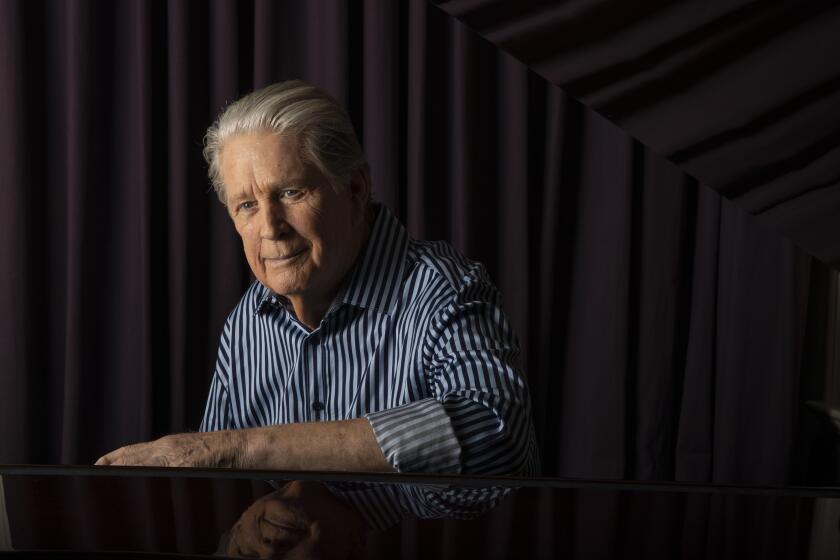Art’s red pill: An appreciation of critic John Berger
- Share via
In high school, I had a social studies teacher who would occasionally scrap California’s curriculum mandates to do things like screen films about Latin American coups and African parasites. It was in this context that I first came across the work of English art critic John Berger, who in 1972 produced an essential four-part documentary for the BBC called “Ways of Seeing.”
In it, Berger, in a very ’70s shag haircut and an even more ’70s patterned shirt, took the viewer on an unparalleled tour of visual culture. He evaluated the ways in which oil painting had historically served as the ultimate status of wealth and power throughout European history — a luxury object often used to chronicle the ownership of other luxury objects. He inveighed against art world myth-making. And he casually elucidated how women have been historically depicted in Western art (nude and available).
If Sister Wendy Beckett is the kindly grandmother who takes you by the hand, and leads you, beatifically, through the wonders of art history, John Berger was the hippie-Marxist uncle who gave you the red pill and told you it was all a mirage. In other words, he set my teenage mind on fire.
On Monday, Berger passed away at the age of 90 at his home in Paris. Over the course of his long life, he worked as an artist (his foray into art began with painting), as well as a critic and essayist, producing well-thumbed volumes on photography, reproduction, landscape and portraiture.
He was also an accomplished novelist. In fact, in 1972 — the same year he was stalking the airwaves of the BBC with his barbed art documentary — he was awarded the prestigious Man Booker Prize for his novel “G,” about the life of a wandering Italian philanderer. Upon winning, Berger pledged to give half his prize money to the Black Panthers, since the award’s sponsors had historical connections to indentured labor in the Caribbean.
For me, Berger will always be the sternly charismatic figure on the grainy television in my darkened social studies classroom. “Ways of Seeing” examined what is shown on the walls of our museums and, more importantly, what gets left out (often, issues of poverty and labor). He deconstructed the ways in which advertising stimulates desire and enforces gender ideals — and shows the connection it bears to Western painting. (Take that, Don Draper.)
And he scolded historians and critics for burying accessible stories of art in piles of word salad.
“What so often inhibits such a spontaneous process is the false mystification which surrounds art,” he states right into the camera in the first episode. “For instance, the art book depends upon reproductions. Yet often what the reproductions make accessible, the text makes inaccessible. What may become part of our language is jealously guarded and kept within the narrow preserves of the art expert.”
Art for Berger, wasn’t some venerational object in a museum. It was something that bore evidence of our systems of thought as well as our systems of commerce. These were objects with stories: the stories they told and the stories we layer on top in any given political or social context. Art was never above. It was right in the scrum, as much an indicator of our delights as it is of our prejudices.
What Berger taught me is not just how to look at an image — but to look through it and ask why and how. I’m profoundly thankful to him, and to my teacher, Jim Mamer, who decided that an afternoon with Berger was better than anything the state of California could dream up.
Rest in power, John Berger. You have no equal.
Arts website UbuWeb has the full-four episode “Ways of Seeing” series online. Likewise, Hyperallergic has posted a number of filmed conversations and interviews online, including a discussion about storytelling between Berger and essayist Susan Sontag.
Sign up for our weekly Essential Arts & Culture newsletter »
ALSO
Art after Fidel: What Castro’s death means for a rising generation of Cuban artists
‘It hasn’t left me’: How Black Lives Matter used performance to create unforgettable 2016 moments
More to Read
The biggest entertainment stories
Get our big stories about Hollywood, film, television, music, arts, culture and more right in your inbox as soon as they publish.
You may occasionally receive promotional content from the Los Angeles Times.










